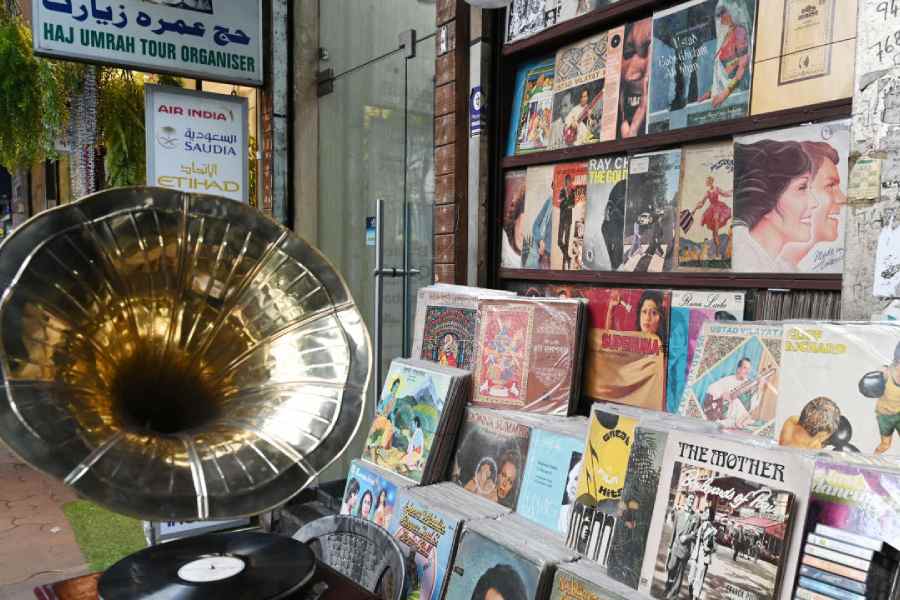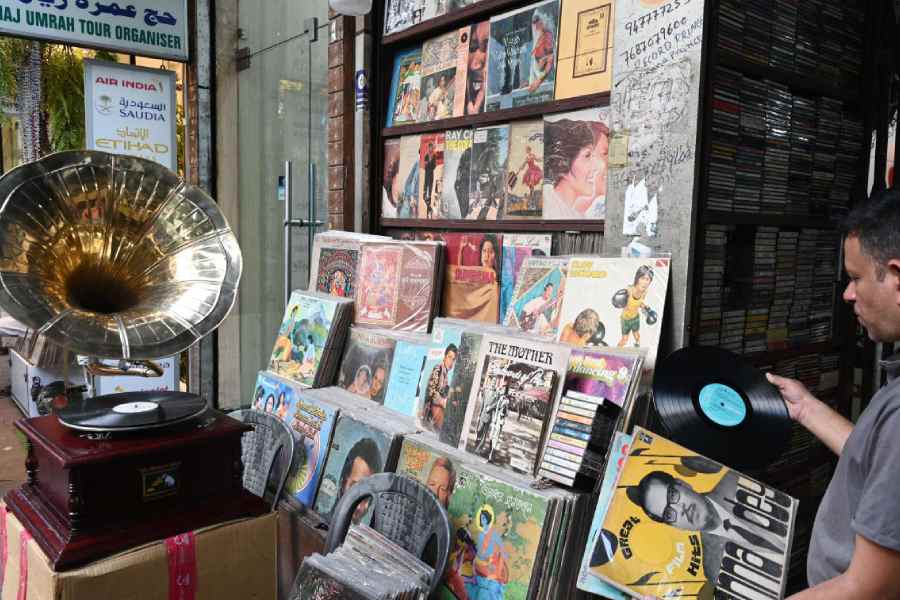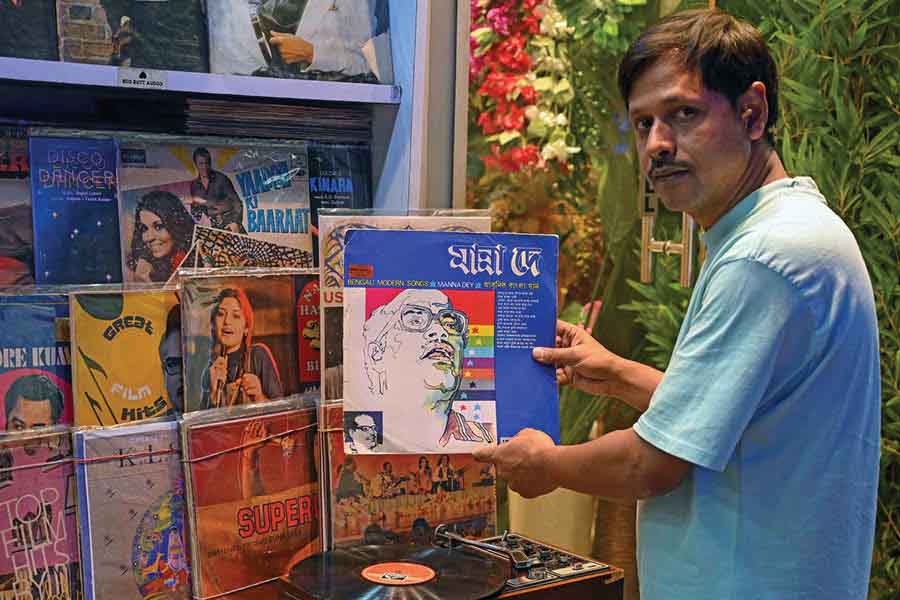Disclaimer: This is NOT another Audiophile’s Decisive Comparison between vinyl, CD, cassettes and streaming mp3s. But it has been triggered by yet another post about some music icon who still visits music stores to buy vinyls! And of course, the string of comments, on the whole listening experience, both for and against.
Vinyl. Pronounced “vie nil”. Yes, I checked it with Google and a few other erudite scholars. The 12-inch polystyrene repository of musical memories, usually black, but other shades these days, are vinyls. The pedestrian buyer in Calcutta called them ‘LPs’ for Long Playing Records. Well, in my day folks around me said “vee nile”. It rhymes with phenyle, but has nothing to do with cleaning or a clean sound. These days, everyone and his uncle is rushing to purchase ‘vinyls’ because they are the best possible listening experience since Edison. My own historical nostalgia traces the rise and fall and rise again of the vinyl, including the involvement of the dog, not the HMV dog though. We lived through it all.

The pedestrian buyer in Calcutta called vinyls ‘LPs’ for Long Playing Records Amit Datta
They were not always referred to as vinyls. They went through various avatars – they were ‘records’ before they became ‘discs’ at the discotheques, and then they became ‘albums’ and sometimes ‘45s’ before they reverted to their raw material as vinyls. There were record collections in most houses. My dad had his radiogram. This was the closest to a two-in-one back in the day. A highly polished cabinet housed the AM-MW radio, a single 10” speaker and a Garrard Record Changer which could automatically plop 45s in a stack onto the turntable. It was almost a home jukebox. The ‘needle’ could be cleaned and changed when it wore out. And the inevitable jumping tracks could be tamed with a 10 paise coin sitting on the head of the arm. I deliberately threw all those terms at you to let you enjoy the richness of language that surrounded the humble music system back then. Today we use ‘turntables’ that don’t sound as sexy, the vinyls don’t change, you have to change them, and the humble needle has become a stylus – iPad kids, don’t get confused, this is not a pen.
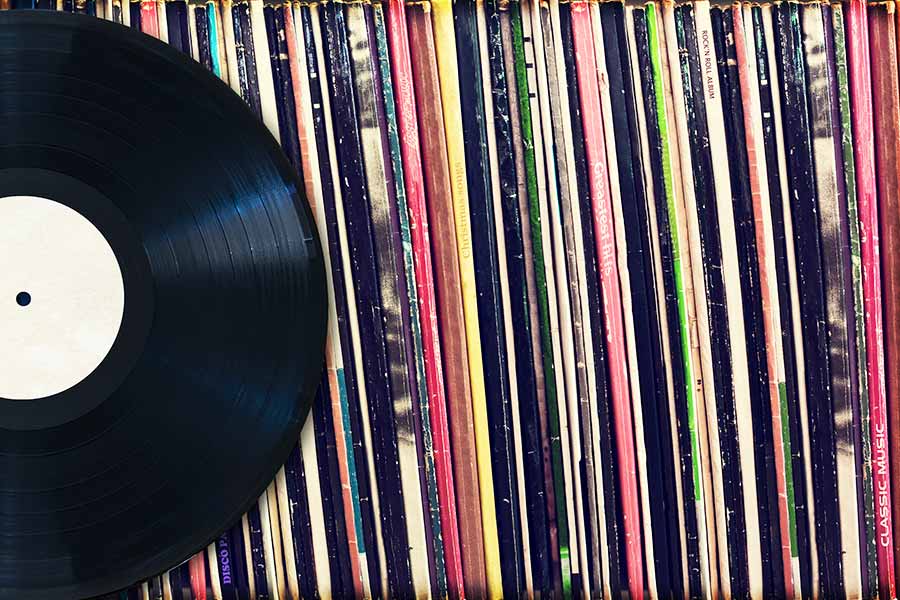
Vinyls went through various avatars – they were ‘records’ before they became ‘discs’, and then they became ‘albums’ and sometimes ‘45s’ before they reverted to their raw material as vinyls Shutterstock
The evolution of music at our house involved a Grundig tape recorder with big wheels, sorry, ‘spools’ of tape. Everyone was allowed to sing one song and listen back to it later. The monophonic radiogram was for the collection of records and listening to Radio Ceylon or Musical Band Box. Resources were limited as were our vinyls. This had the pleasing effect of educating everyone, track by track, in the music my dad loved and collected – jazz.
But we evolved from listeners to wannabe musicians – a couple of guitars, a drum kit, everything plugged into a Gibtone amplifier, and a list of songs we wanted to play. There was no Google, no YouTube, so we had to ‘pick up’ the songs with our ears tuned into the music system. Fortunately, or otherwise, the system had evolved into cassette players. Today, they would be called dictaphones, but in our day, a portable, battery-operated music device which didn’t develop scratches, and could store entire albums in a pocket, was a divine invention, never mind the need for octagonal Nataraj pencils to wind them up. The lyrics we heard were not the ones written, but no one else knew that either. The chords and arrangements we played would have the Rolling Stones rolling in their graves, if they ever get there. But cassettes were the way to go for musicians. You could record a piece of music, go home and practise it to death, then overwrite it with another song. Reusable media, unlike those fragile and bulky vinyls! But we had to deal with finding the song - rewind - forward - rewind - forward. Placing the needle accurately on a track on a vinyl was easier.
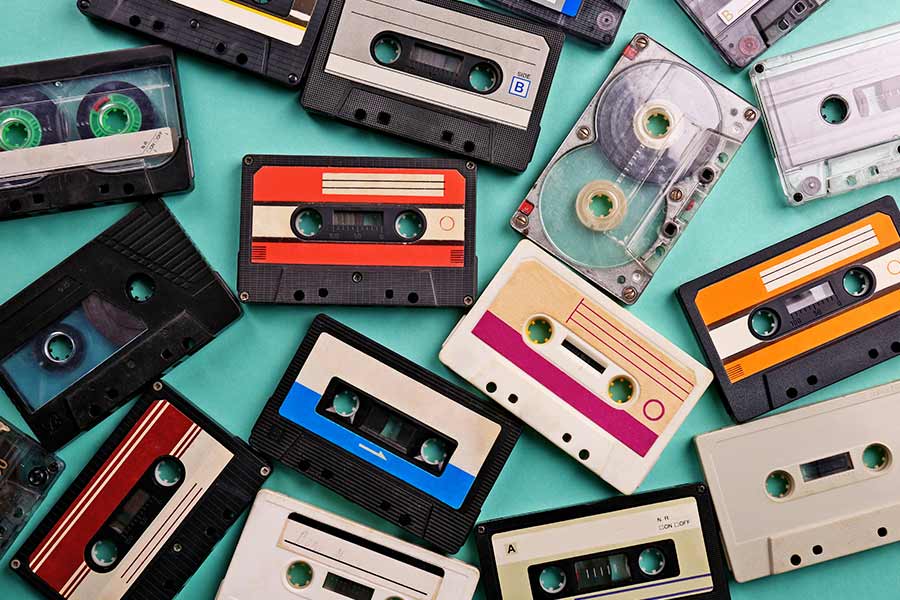
For a while, cassettes were the way to go for musicians. You could record a piece of music, go home and practise it to death, then overwrite it with another song. Reusable media, unlike those fragile and bulky vinyls! Shutterstock
With our pocket money we invested in hardcover notebooks. Words were faithfully recorded as heard or copied from those little Hong Kong songbooks – highly suspicious when the first line of Ticket to Ride read “Dim dom gonna be sad, think it’s a day”. Today Google and Karaoke might give you something a little more accurate but can also be quite the disaster if you get to the wrong site.
Next came the CDs, which were tougher than vinyls and cassettes – no pencils needed to unravel them, the ‘sleeves’ were replaced with tougher plastic cases. Purists sang praises to the high quality of ‘remastered music’. And they took up very little space for the amount of music they contained. In some way, they brought back a little of the functionality and joy of the vinyl. They had tracks which could be selected. They had printed inserts which gave the story of the album – oh, how we enjoyed reading the album covers. We knew the names of each musician, some background, and often, the real words! My only regret is that one of my prized CDs got played by the dog – scratched to death – and ended up as a table coaster at home. Vinyls too ended up sounding like music to the frying of eggs.
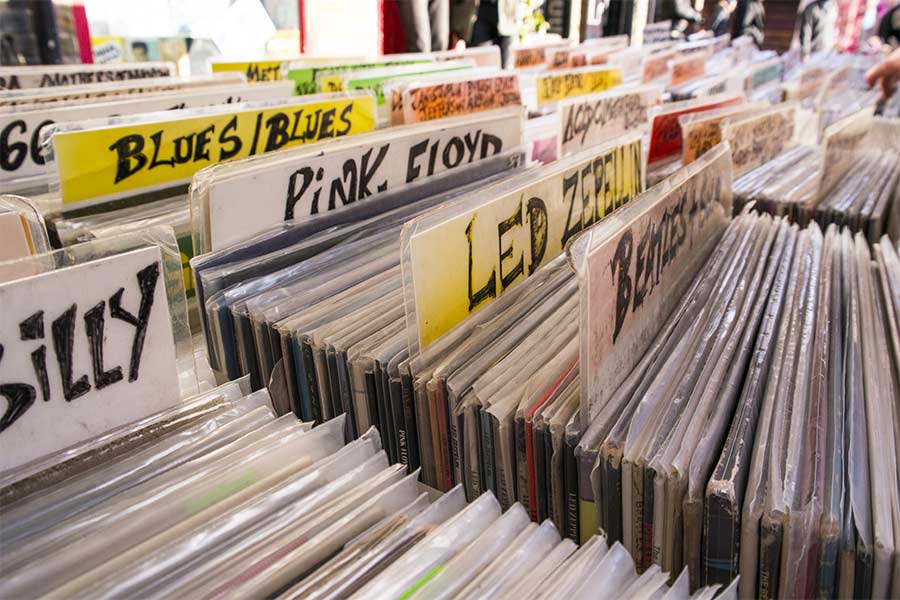
Imagine listening to ‘selections’ from ‘Dark Side of the Moon’ or a rock opera like ‘Tommy’. The vinyl albums give you a different holistic experience – you listened to them Shutterstock
Then the world in its wisdom invented streaming platforms and MP3 – arguably the most painful on the ears, but the most available. Now, you don't need to listen to whole ‘albums’. You can pick and choose, hop around the internet and even illegally download your own collection. Perhaps, I am old (I am) but that joy of listening to a whole album expressed with emotion from beginning to end, while lovingly turning the sleeve around in your hands, cannot be replicated by streaming playlists! Imagine listening to ‘selections’ from Dark Side of the Moon or a rock opera like Tommy. The vinyl albums give you a different holistic experience – you listened to them.
So, to get that experience, we need to buy our own albums, and turntables, and amplifiers, and speakers. Albums that we bought in the ’70s for 25 bucks are now, in keeping with inflation, retailing for 2,000 bucks or more! So, you are either a serious collector or a seriously rich collector, or perhaps the heir of a whimsical collector.
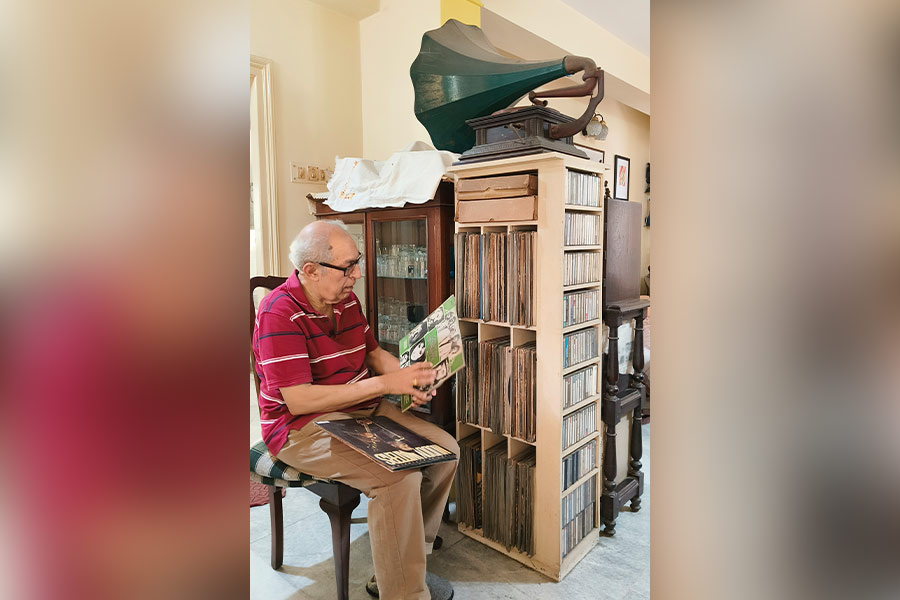
Ian Zachariah and his collection of 2,000+ vinyls Leslie D'Gama
But all is not lost. There are now excellent facilities where you can listen to great music on vinyl for the price of a cup of coffee, lower than the cost of a track. One such is Zee’s Coffee Shop on Mayfair Road, which hosts Vinyl Sundays every week. Varun Desai ensures that the listeners have a great audio experience, tinged with nostalgia, without sacrificing a lot of space at home for their collections. Other friends bring their own vinyls. This results in a community experience – and naturally, the session is always embellished with adda which could result in strong views on quality, media and album sleeves!
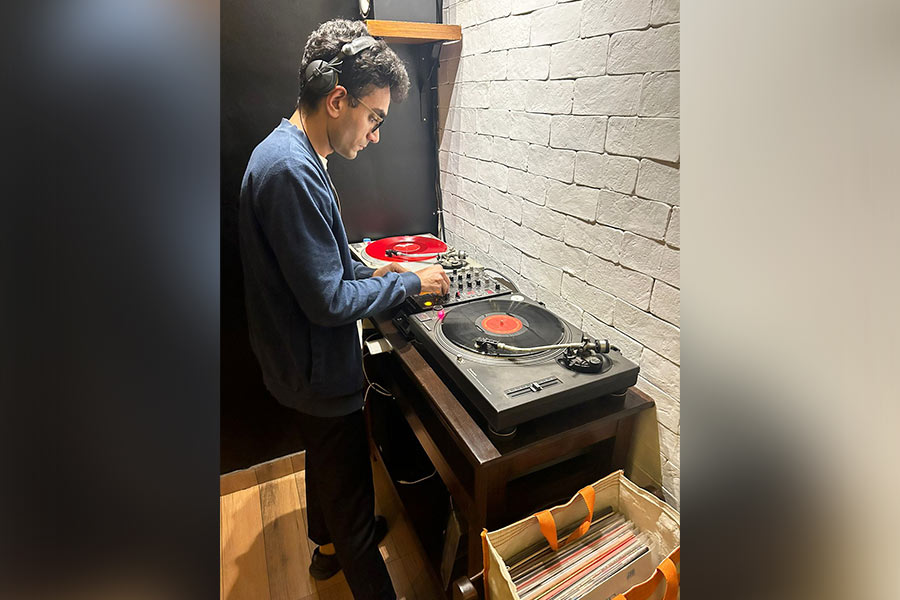
Musician Jivraj Singh spins a disc on Vinyl Sundays at Zee's Coffee Shop Varun Desai
A final word in the eternal debate of Vinyls versus Cassettes versus CDs versus MP3 streaming: Give me live music any day. Kolkata has a rising tide of live music at various places, managed by young curators and directors with some really good musicians. With all its imperfections live music doesn’t have scratches, jumps, wow and flutter. But it might have a little feedback which we can live with. And we have to pay for it, of course.
